Originally published on February 7, 2023, this article has been updated on October 19, 2023 to reflect the latest research and statistics. Our editorial team has ensured you’re viewing the most current data on this topic. Need help or have a question? Email us.
Bees lived on Earth long before humans, and without them, the world we know today would be a very different place.
The need to protect the bees is now more crucial than ever, and if we want to continue eating the way we do, drastic changes need to happen in order to save the bees.
Educating ourselves on bee-related topics is one way to better understand bees and the impact they make on this planet. So to help with that, we’ve compiled some of the most interesting bee facts to hopefully make more people appreciate the hard work these little insects do.
10 Most Informative Facts
- Bees Have 5 Eyes
- The Honey Bees Belong to the Insect Family, With 6 Legs
- The Weight of a Single Bee Is 0.00025 Pounds
- Honey Bees Fly Up To 20 Miles Per Hour
- The Queen Bee Has a Lifespan Of 1 To 2 Years
- The Lifespan of a Worker Bee Is 4 to 6 Weeks in Summer
- Queen Honey Bee Lays 800,000 Eggs Throughout Its Life
- Young Larva Eats ‘Royal Jelly’ To Become A Queen
- Bees Have Inhabited the Planet for 30 Million Years
- Average Hive Can Hold 50,000 Bees
Interesting Facts About Bees

Bees may be small, but I personally think they deserve way more credit than they’re given, and there are many bee statistics to back that claim. Here are some interesting facts that you might not have known about bees.
Bees Have Inhabited the Planet for 30 Million Years (WALA)
Humans have walked the planet for roughly 6 million years, but bees have called Earth home for five times that amount.
WALA estimates that for the past 30 million years, bees have been evolving and pollinating the world’s flowers, developing essential tools and strategies along the way.
The Weight of a Single Bee Is 0.00025 Pounds (IRPS)
A single worker bee weighs 0.00025lb, which is less than a grain of rice, according to Iron Range Partnership for Sustainability, so it’s crazy to think that these tiny insects are what maintain the crops that provide us, humans, with a large percentage of our food.
Honey Bees Live in Nests or Hives Either Above or Below the Ground. Whereas Solitary Bees Live on the Ground (WWF)
When I think of a bee’s home, my mind instantly gets drawn to hives and nests above the ground, and I probably have Winnie the Pooh to blame for that.
But although many honey bees build their nests or hives up high, some honey bees, as well as solitary bees, build their nests underground in places like marshes, sand dunes, chalk grasslands, and gravel pits. Be careful where you’re treading!
A Single Honey Bee Creates One Twelfth of a Teaspoon of Honey During Its Whole Life (PBS)

Western worker honey bees sure do work their butts off, and in their extremely short lives, typically less than two months, a single worker bee will produce one-twelfth of a teaspoon of honey, around 0.58 grams.
Honey Bees Fly Up To 20 Miles Per Hour (The British Beekeeper Association)
One second, bees are there, and the next, they’re gone. But have you ever wondered how fast a bee could fly? Well, it is approximated that when bees are flying to a food source, they can be as fast as a coyote, flying at speeds of 15 – 20 mph.
The Flying Speed Of Bees Can Reach Up To 12 Mph (The British Beekeeper Association)
When worker bees fly back to their hive after stocking up on nectar, pollen, and water, their average flying speed will be up to 8 mph, averaging 12 mph.
The Buzzing Sound Of Honey Bee Comes Due To Striking Their Wings For About 11400 Times Per Minute (Stem Newcastle)
When you’re little, you learn about the noises animals make, and when your parent asked the question, “What sound does a bee make?” you instinctively replied with, “Buzz.” But have you ever stopped to wonder where that buzzing noise comes from?
Well, bees, similar to how crickets rub their legs together, create their distinctive buzz from their wings by beating them together at a rate of 190 beats per second.
Throughout the Year, Bees Maintain Their Hive Temperature Between 85 to 96 Degrees Fahrenheit (Oregon State University)
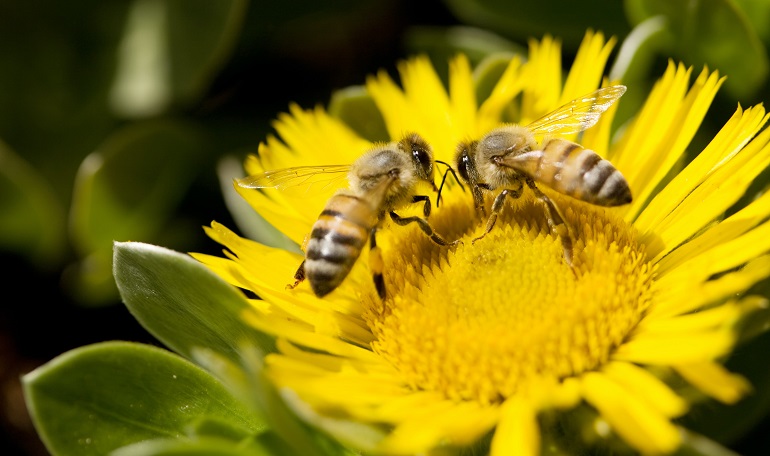
Honey bee larvae and pupae can only develop and survive in certain temperatures, which throughout the year is between 85 degrees Fahrenheit and 95 degrees Fahrenheit. If the temperatures in the hive were to drop below 85 or rise above 95 degrees, then the larvae and pupae would die.
In order to combat this, even though they’re cold-blooded, the Oregon State University who did a study on bee hives, realized that honey bees could change their individual body temperature and the overall temperature of their hive by shivering, fanning and keeping their distance from one another.
Average Hive Can Hold 50,000 Bees (NATO)
A typical beehive that measures 22 inches by 16 inches can be home to a staggering 50,000 bees. A study by USDA scientist C.L. Farrar explained how a single hive with a large bee population of 50,000 could create more honey than two hives with populations of 25,000.
The Most Populous Bee Colony Can Have 40,000 To 60,000 Bees (The American Bee Journal)
Although, on average, a bee colony will consist of 50,000 bees, some hives actually hold up to 10,000 more. The American Bee Journal believes that when bee populations are at their peak in the late spring and early summer, hives can hold a whopping 60,000 bees.
The Lifespan of a Worker Bee Is 4 to 6 Weeks in Summer and 5 to 7 Months in Winter (University of Delaware)
The time of year a bee is born will ultimately determine its lifespan. In the summer months, worker bees will live for an average of 4 to 6 weeks, whereas in winter, which is an inactive period, worker bees can live for up to 200 days.
The reason why worker bees live longer in the winter is that they save all of the energy that they would normally use for foraging, as thanks to the cold temperatures, they rarely leave their hives. Although bees hate the winter, it sure does benefit their life duration.
In a 1–2 Day Mating Period, Queen Bee Mates With 17 Drones (NCBI)
The queen honey bee’s schedule is always jam-packed as in order to lay eggs and replenish the hives population, the queen, over a 2-day period, needs to mate with more than a dozen drones.
Drone bees are male bees, and unlike female worker honeybees, they don’t have stingers and cannot gather nectar and pollen on a typical foraging trip.
Queen Honey Bee Lays 800,000 Eggs Throughout Its Life (Medium)
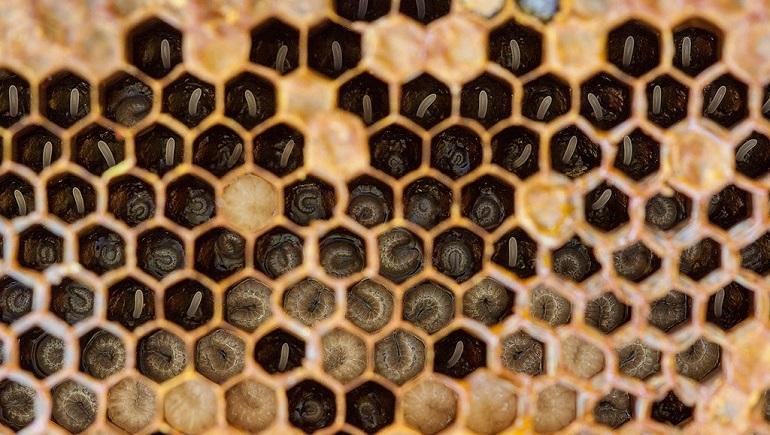
Queen bees have a fully developed reproductive system, unlike other bees with an atrophic reproductive system. In simple terms, an atrophic reproductive system means that although the worker bees are female, they can’t develop and produce fertile eggs.
The role of a fertile queen is to simply lay eggs, and that’s exactly what she does, as, throughout her entire life, a queen will lay up 800,000 eggs to keep her hive happy and healthy.
The Queen Bee Has a Lifespan Of 1 To 2 Years (NCBI)
Workers really get the short end of the stick as a queen bee, on average, lives up to a minimum of 3.5 times longer. According to NCBI, a queen bee can live up to 2 years, but in one study in Boznia, a queen’s maximum lifespan reached an incredible eight years.
Honey Bees Have Smelly Feet To Distinguish Their Relatives and Strangers (WWF)
Throughout the animal kingdom, scent is a popular way for animals to recognize and distinguish one another; surprisingly enough, bees can also tell each other apart by how they smell.
Bees throughout evolution have developed what the University of Bristol describes as smelly feet.
When a bee lands on a flower, its smelly footprint is left behind, so when other bees in their hive fly over to the same flower, they will know that someone has already extracted food so they can move on and find a successful food source somewhere else.
Young Larva Eats ‘Royal Jelly’ To Become A Queen (WWF)
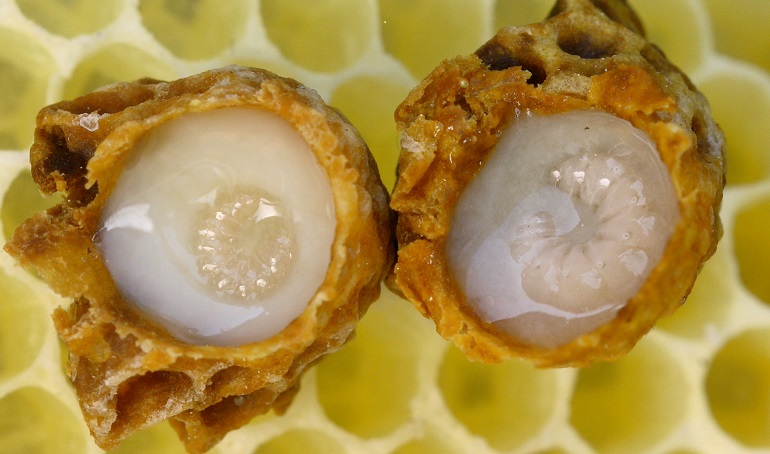
The hive will select and create a new fertile queen if a queen bee dies. To make a new queen, the workers will choose a young larva and feed it ‘royal jelly,’ which essentially is a special food filled with proteins, sugars, vitamin C, and minerals.
One of the Most Incredible Shapes in the World Is the Hexagonal Structure of a Honeycomb (Buzz About Bees)
The world is filled with shapes, from rectangles and triangles to kites and trapeziums, but why did bees, out of all these shapes, choose to build their honeycombs out of hexagons?
Hexagons are able to hold the most amount of honey while taking up very little space. You see, hexagons fit tightly together, and in order to create one, a bee would need very minimal wax.
The Mode of Bee Communication Is via Waggle Dance (WWF)
The ways bees communicate are very different from you and mine because they obviously can’t talk to one another and definitely can’t shoot each other a text or an email. So, to communicate with other bees, bees perform a dance move that we call the waggle dance.
Sussex University did a study into the waggle dance to try and decode its meaning and the messages that bees sent to one another. The study concluded that the waggle dance is a bee’s way of informing its nestmates where the best food sources are.
Bees Are Popular in Raiding Other Hives and Stealing Honey (University of Florida )
Bees aren’t all sweet and innocent; I’m not talking about their stingers. Bees, in times of nectar shortage, will rob honey from other bee hives by ripping open full honey cells and filling their stomachs before flying back to their own hives with the goods.
In times of hive robbing, many bees tend to die as they defend their hive and try to fight off invaders.
Honey And Pollens Sums Up Bees Diet (NCBI)
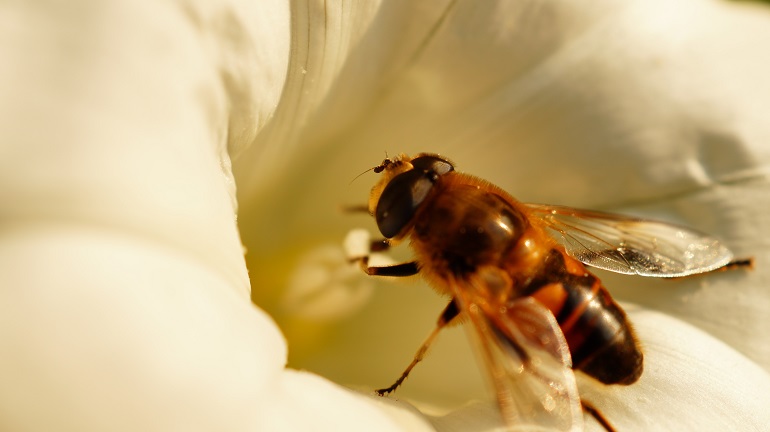
I’m hopeless when it comes to choosing what I want for dinner, but for a bee, the choices are fairly simple – honey, nectar, or pollen. Once a worker bee chooses its cuisine for the day, it’ll need to ingest 11 mgs of sugar to survive and thrive.
A B-Line Transport System Is Assisting UK Bees (WWF)
A loss of flowers and pollinators has caused issues for UK bees, but a B-line transportation system has come to the rescue.
The B-lines are a series of insect pathways that run through various towns and countryside throughout the UK, essentially linking wildlife areas together to help bees find their way to valuable food sources.
Offering a Drop or Two of Sugar Water Can Bring Bees Back to Life (WWF)
If you ever see a bumblebee that appears to be struggling, there is a really simple thing you can do to hopefully bring it back to life.
Mix together two parts sugar to one part water and offer the solution to the bee on a teaspoon or in a bottle cap. Leave the mixture close to them and allow them to cooperate, preferably in a dry and sheltered place.
Honey Bees Morphology
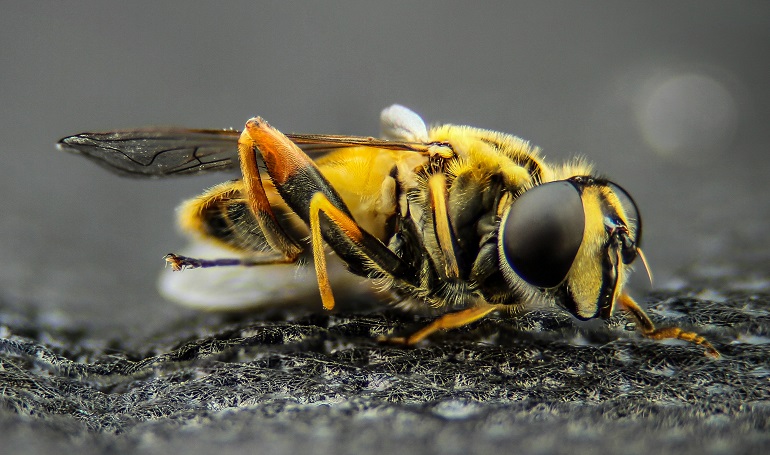
You may not have stopped thinking about bees and their morphology, but here are six bee morphology facts to help you better understand the honey bee.
The Honey Bees Belong to Insect Family, With 6 Legs (Arizona State University)
All adult insects in the animal kingdom have three pairs of legs, meaning six total, and three different body parts: the head, the thorax, and the abdomen.
Although you may not be able to see all the different parts of a honey bee, especially if they’re buzzing at fast speeds around you, a honey bee also features six legs and three body parts, making it a proud part of the insect family.
Bees Have 5 Eyes (British Beekeepers Association)
In most animals, eyes come in pairs, but bees weirdly have an odd number of eyes. A bee has a total of five eyes: two large eyes at the front of its head and three smaller eyes at the top of its head.
The large front eyes pick up shapes and colors in the bee’s environment, whereas the three small eyes aid in navigation and orientation. But bees aren’t the only insects with five eyes as grasshoppers, hornets, dragonflies, and wasps boast five eyes too!
Bees Carry Pollen In Corbicula (University of Florida)
Corbicula is a technical name for a pollen basket, and some bee species, like bumble bees, for example, have corbicula on their hind legs, consisting of a curved area surrounded by long hairs.
When a bee is out collecting pollen, they moisten the pollen with nectar and pack it into its corbicula, which then holds it in place until the bee gets back to the hive. Bee venom is kept in a sack attached to the singer.
Bees Have 2 Pairs of Wings (Arizona State University)
On top of a bee’s hard exoskeleton, three body parts, a pair of antennae, and three pairs of legs, bees also have two pairs of wings, the fore wing and the hind wing. When a bee takes flight, its wings latch together with hooks and create a larger surface area to improve speed and lift.
Below Their Abdominal Region Are 8 Glands, Which Are Used To Produce Beeswax (University of Arkansas)
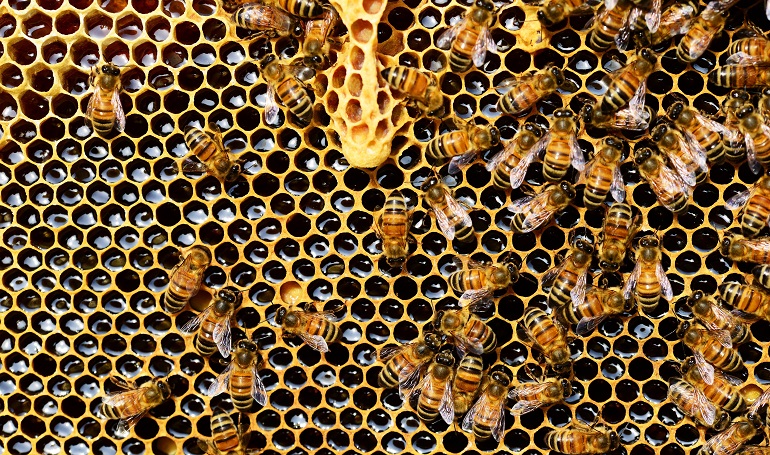
To create beeswax, bees need warm temperatures, honey, and eight glands in their abdomen. The first step is for the bees in the hive to huddle together to increase the hive’s temperature to at least 91 degrees Fahrenheit.
Once the hive reaches the bee’s desired temperature, the bees can enable the wax glands in their abdomen.
The eight glands in the bee’s abdomen are able to convert the sugar in the honey into beeswax, which then oozes through a bee’s pores to ultimately create beeswax scales.
Honey Bee Has a Poppy Seed-Sized Brain (WWF)
The buff-tailed bumblebee, which ranges from 11 mm to 17 mm long, has a brain the size of a poppy seed. Poppy seeds are roughly 1 mm, and although a bee’s brain is tiny, some scientists have managed to train bees to carry out tasks in return for a sweet treat.
Bee Pollination Facts
Bees are incredible, tireless pollinators, and here are four bee pollination facts that’ll blow your mind.
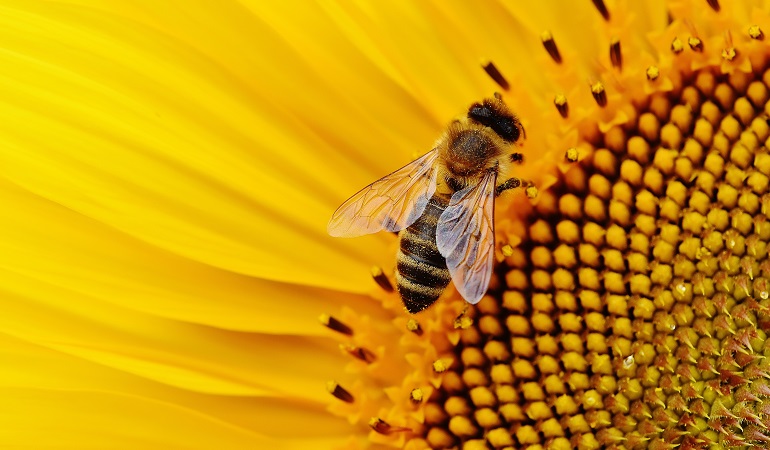
Apis mellifera Is Eco Friendly and an Important Pollinator (NCBI)
Apis Mellifera, who we better know as the western honey bee, is the world’s most populous bee and one of the most important pollinators as they account for more than 80 million hives and produce 1.6 million tones of honey.
Around 90% of the Wild Plants and 75% of the Food Crops Rely on Animal Pollination (WWF)
It is estimated that one of every three mouthfuls of food we eat is pollinated by bees. If we were to lose bee species, a huge amount of wild and human-grown plants and crops would die, leaving us with minimal food supplies.
In Collection Of Nectar, Honey Bees Visit 50 To 100 Flowers (The Honey Association)
When a female worker bee heads out in search of nectar, it often visits up to 100 flowers throughout the course of its day. Now, 100 flowers may seem like a lot, but to put it into perspective, if bees were to create 1 kilogram of honey, they would need to extract nectar from 2,737,500 flowers!
In The U.S., Bees Pollinate Approximately 130 Food and Agricultural Crops (USDA)
According to the USDA, bees are responsible for pollinating fruit, nut, and vegetable crops, equating to $150 billion throughout the United States. The next time you pick up your favorite fruit and vegetables, be sure to thank the bees.
Almost 15 Billion Dollars Annually Are Produced as a Result of Bee Pollination To Improve the Quality and Crop Yield (USDA)
Managed bee colonies are the main pollinators and add up to $15 billion per year by increasing yields and ensuring good quality harvests. However, the beekeepers are rapidly losing colonies, and the country has seen a huge decline in the number of honey bee hives.
Facts About Honey
Whether you’re a honey lover or a honey hater, you’ll find these honey facts very interesting.
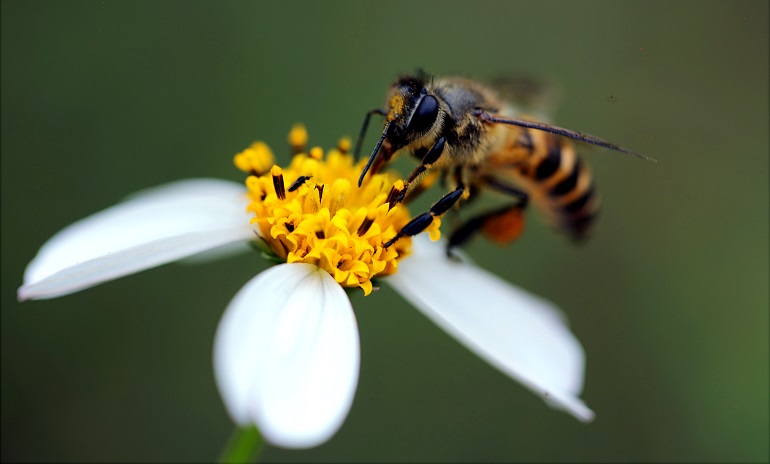
The Most Ancient Fermented Beverage Is the Mead (Research Gate)
Mead is the result of the alcoholic fermentation of diluted honey, rice, and fruit. The fermented concoction dates all the way back to the 7th millennium BCE, which is 9,000 years ago, making it one of the oldest fermented beverages on the planet.
Honey Is 80% Sugar and 20% Water (NCBI)
The sugar-to-water ratio in honey really depends on the bee species, the plant, the weather, and the humidity, but on average, bees will make honey out of 80% sugar, which they typically get from nectar and 20% water.
To Make 1 Pound of Honey, Foragers Collect Nectar From 2 Million Flowers (Canadian Honey Council)
Every jar of honey you purchase requires the nectar of 2 million flowers, and in total, the bees that extract that nectar will collectively fly 55,000 miles.
The journey across America is 13,699 miles, so a hive of bees will fly just over four times that all for one jar of honey.
In The U.S., The Average Honey Consumption Is 1.3 Pounds Per Capita (South Dakota State University Extension)
Americans sure do love their honey, as it is estimated that the average person consumes a jar and a quarter of honey a year. With over 330 million people in the U.S., that’s a whole lot of honey.
North Dakota Is The State Which Produces The Largest Amount Of Honey (US Department Of Agriculture)
The US Department of Agriculture lists the top ten states for honey production, and you’ll be astonished to know that the leader produces a staggering 31.2 million pounds of honey.
The top 10 states are as follows:
- North Dakota
- California
- Texas
- Montana
- Florida
- South Dakota
- Minnesota
- Oregon
- Michigan
- Georgia

Measures To Save Honey Bees
Protecting honey bees is vital, and there are a few things you can do to help the populations flourish.
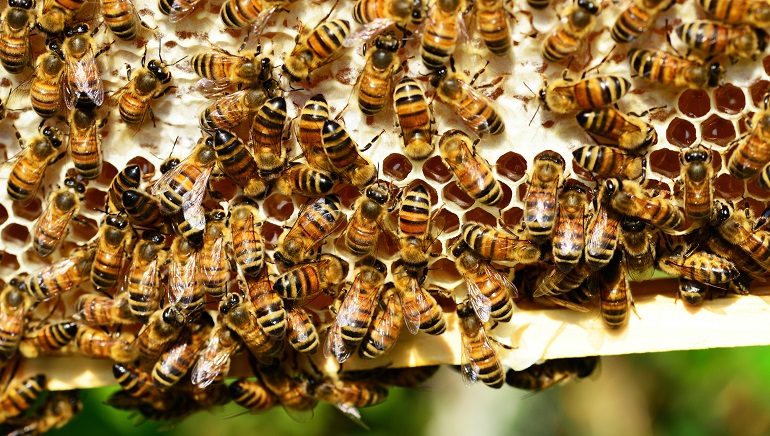
Planting a Range of Flowers in Your Garden (WWF)
Bees love flowers and all the nectar and pollen they give, so by planting a range of flowers that are rich in pollen and nectar, you will feed and subsequently save thousands of bees.
Educate Friends and Family About Bees’ Importance (WWF)
Chatting to your friends and family about how cool bees are and the huge impact they make on this world is another way to save the bees. If everyone knew what you now know from this article, then the bees would be safer, and hopefully, populations would be on the increase.
Other Facts About Bees
Below are the fun facts about bees:
- Only female bees can be worker bees.
- There are roughly 20,000 bee species all over the world.
- Male bees, or drones, can not sting.
- Bees especially love flowers in the violet-blue range, like bluebells and lavender.
FAQs
Are Honey Bees Endangered?
Of all the 20,000 species globally, not all species are endangered, as there are 16 species that are vulnerable, 18 that are endangered, and nine that are critically endangered.
What Is the Population of Honey Bees Left in the World?
Although we don’t have an exact figure on the number of honey bees there are left in the world, we can estimate that there are around 80 million to 100 million beehives, which can all contain up to 60,000 bees.
How Much Honey Does a Bee Make?
Bees are the only insect that produces food eaten by humans, and in total, a single honeybee will create one-twelfth of a teaspoon of honey in its lifetime.
How Fast Do Honey Bees Fly?
Flying to their food source, bees can fly up to 20mph; however, when bees are flying back to their hive weighed down with nectar and pollen, their average speed is around 12 mph.
Why Do Bees Eat Honey?
It seems strange that bees eat the product that they make, but honey is packed full of nutrients and carbohydrates that give the bees the energy they need to create even more of it.
Conclusion
Without bees, our world would be in turmoil, and a large percentage of our food sources would vanish.
We need to act now and do everything we can to save the bees, as once the individual species go extinct, there is no getting them back, and life as we know it will be no more.


